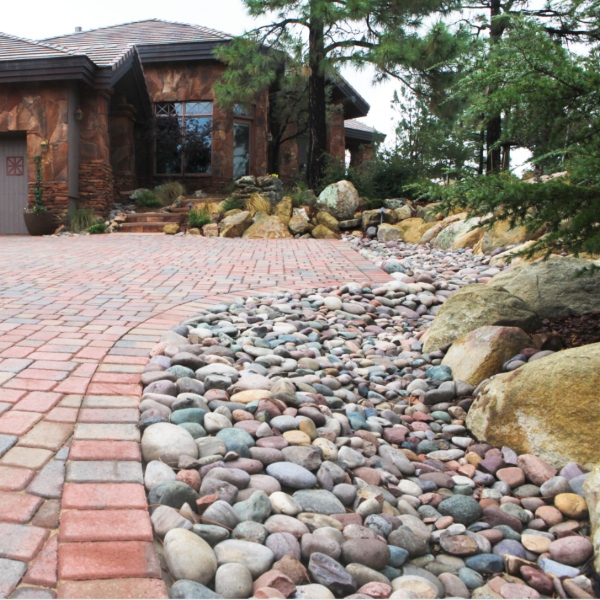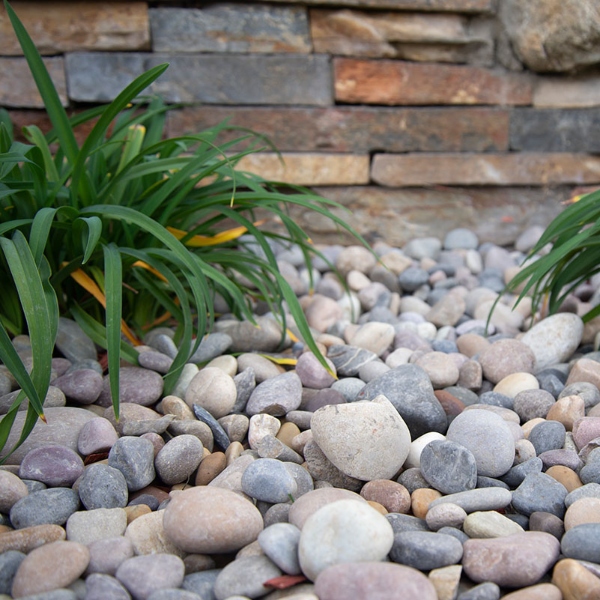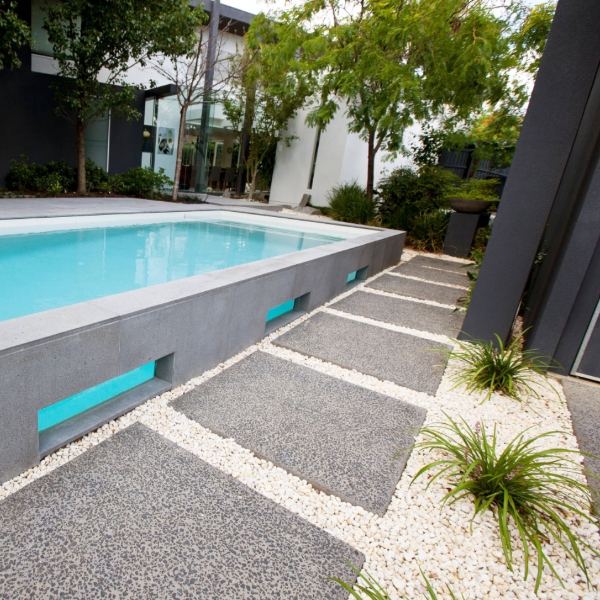9 Drought Tolerant Landscaping Ideas With Landscape Rock And Pebbles
February 04, 2021Drought tolerant landscaping is a great idea on so many levels, and landscape rock takes landscaping to a whole new level. First, as its name implies, you save huge amounts of water. This makes it a climate-friendly thing to do, especially if you live in low-rainfall areas.
Still on the water conservation theme, you can abolish all the worry and fuss entitled in maintaining a pristine green lawn. Let's face it, for the time you actually spend on the grass, a lawn is a lot of hard work and a drain on your precious resources of time, money, and water. Why struggle to keep a lawn going when the alternative — pebbles and garden rock ideas — can provide you with an interesting and pleasurable outdoor environment?
Let's look at the principles behind hardscaping and how to make your garden drought-tolerant. We're guessing you will be both surprised and delighted at the many creative possibilities in store for you.
Drought Tolerance Defined
Drought tolerance in broad terms applies to plants that can survive in average or below-average rainfall conditions. Drought tolerance is also region-specific, so, for example, plants that are drought tolerant in Oregon are unlikely to be drought-tolerant in Southern California or Texas. The basic rule of creating a drought-tolerant landscape is to use plants that are native to the area in which you live.
The advantage of using native plants, or plants from other regions of the world that survive in similar conditions, is that you will not have to irrigate. If irrigation is necessary, then it will be sparing and infrequent.
Arid climates are most often located in USDA Zone 9. You will be surprised at the wide range of plants that will survive and thrive in dry conditions. One surprise is that Lavender is drought tolerant and can provide a splash of color and pleasant scent in your landscaped rock garden.
It is worth noting here, especially for beginner gardeners, that all young plants will need watering until their roots are well established.
So much for the choice of plants to feature in your garden. But where are you going to put them? Our suggestion is that you can set these plants in an imaginatively designed landscape of rocks and pebbles to show them off to the best effect.
Drought Tolerant Landscaping with Pebbles and Rocks
By landscaping with pebbles, rocks, and paving, you will not need as many plants as you think. This is because the pebbles and "hardscapes" are a feature in themselves.
A layer of pebbles on top of the soil where your plants are located is in itself a water conservation measure. The pebbles help to retain moisture in the soil, and they look attractive. In other words, you're using peb
bles in place of mulch, such as lawn clippings or pine chips.
You'll quickly realize that unlike green mulches or wood chips, pebbles will not decompose, so you will have a much more durable way of preserving soil moisture and keeping things looking neat.
How can you add to the natural appeal of stone and rock? Check out the video below for inspiration and read on for more tips and tricks!
Follow the Lie of the Land
It might be helpful to think of landscape rock as an extension of your immediate outdoor living area. Most people in sunnier climates will have an outdoor living area that is already paved, featuring pot plants or flower beds.
The idea behind landscape rock is to sculpt your garden according to the topography of your garden. Take advantage of slopes to introduce stone steps, say from one area of the garden to another. Or introduce a stone retaining wall that also serves as a place to plant succulents.
Contrast Is Key
Pathways are a great way to link one area of your garden to another. Pathways and plant beds give you the prime opportunity to contrast the types of pebbles you use.
For example, you might want to use black polished pebbles on top of the soil in pots containing a bromeliad that has a light pink flower. Or, you could use black pebbles as a border for creative shapes made on flat surfaces using brown or white pebbles as a contrast.
Patterns add to visual appeal, and pattern possibilities are endless. For walkways and permanent features, you can find inspiration from Portuguese paving, or calçada portuguesa, a feature of every city and village in Portugal. Adapting these ideas using pebbles of contrasting colors and sizes can help delineate one area of your landscape from another.
You can also intersperse hard paving blocks or flagstones with pebbles to soften the overall visual effect, or to add interest.
While you can achieve contrast, it is also important to remember that in nature, you pretty much cannot go wrong, since all rock blends and matches with any other rock. Pebble size and color and how they are displayed will create interest in your design. Using different products on different levels can also distinguish one type of natural stone from another in striking ways.
You can also add contrast by placing unpolished pebbles next to polished ones. This technique has the effect of bringing out the best features of both types.
Designing Your Area and Quantifying What You Need
A general rule of thumb for those who have never used pebbles to fill up any given space is that you will need more pebbles than you think. Check out this handy Pebble Calculator. It also helps to draw a rough layout of your garden and what you want to do with it before you make any purchases.
Pebbles come in different sizes, ranging from about 0.5 inches to 7–14 inches, depending on the type of rock, and its origin, in some cases. The size differences just add to creative possibilities.

Most of your rock landscaping can be achieved without the use of cement. But there might be a need to ensure that pebbled paving stays in place by embedding it in cement, and yet still achieving a natural look.
Irrigation
Even though your garden will be drought-tolerant, you should consider the option of drip irrigation. Using either a rainwater tank or gray water (kitchen water or bath water) and connecting it to the irrigation system can help to give water the eco-friendly way those plants that need a little more water than others.
The beauty of using pebbles as ground cover is that the pebbles double up as a way to hid irrigation piping from sight.
Hardscaping Is Worth It
Creating a drought-tolerant landscape is a multi-step process and can take some time to accomplish, but in the end, it's worth it. You give expression to your gardening creativity while preserving the native ecosystem of your area.
Not only that, the money and water savings achieved without sacrificing style and aesthetics are worth the investment. Pebbles are a top choice as an inexpensive yet durable way to protect the soil and make your home and garden look great.




